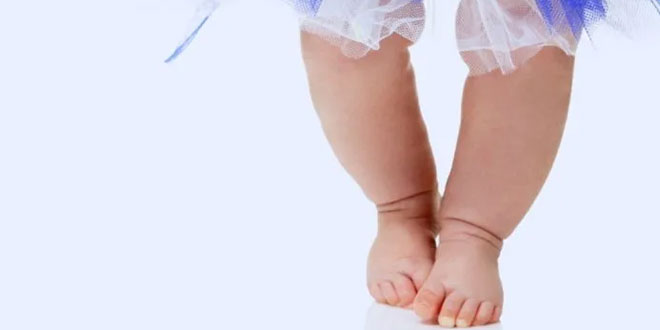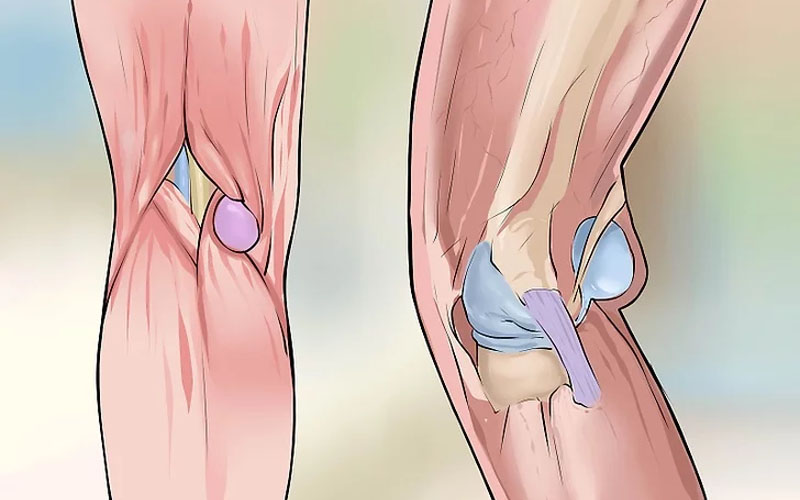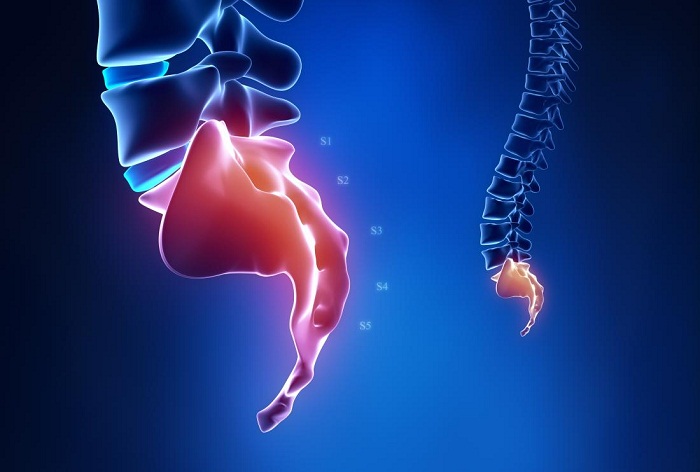Discovering Foot Stress Fracture Treatment Without Plaster and Types of Fractures
Treatment of Foot Fractures Without Casting, In this article, we will provide an overview of foot fractures and how to treat them without the need for casting. We will discuss the causes of the injury and its distinctive symptoms, and we will review the effective steps and techniques that can be used in non-casting treatment.

Treatment of Foot Fractures Without Casting
Treatment of foot fractures without casting requires a precise approach aimed at supporting the natural healing of the bone while maintaining the flexibility and strength of the foot. In simple fracture cases, where there is no bone displacement and the bone stability is believed to be sufficient for healing, cast alternatives such as rigid medical boots or braces that provide the necessary support with some restricted movement can be followed.
These means allow for some safe movement and help reduce the risks of muscle atrophy and loss of flexibility that may occur due to the use of a cast. Rest is an important factor in treatment, as it is recommended to reduce weight and pressure on the injured foot to avoid exacerbating the injury.
It may be recommended to walk using crutches or walkers in the first few weeks after the injury, and the regular application of ice to the injured area can help reduce inflammation and pain, taking care not to place the ice directly on the skin to avoid cold burns.
Physical therapy plays a crucial role in promoting healing and restoring foot function, and it includes targeted exercises to enhance muscle strength, improve flexibility, and gradually increase range of motion. It may also include techniques to improve balance and coordination.
It is important to follow up regularly with the treating physician to assess the progress of healing and adjust the treatment plan as needed, and adherence to medical guidelines and patience are essential to ensure complete healing of the foot fracture and a safe return to normal activity.
Does a Foot Fracture Require a Cast?
Whether a foot fracture requires a cast depends on several factors, including the severity of the fracture, its location, and the overall health condition of the patient. In many cases, a cast can provide the necessary support and ensure the stability of the injured bone, which helps in the healing process by restricting movement and reducing pressure on the foot.
Especially for fractures that occur in weight-bearing areas, such as the metatarsal bones or the ankle, the use of a cast may be recommended to ensure that the bone remains in the correct position during healing. However, not all foot fracture cases require a cast.
In cases of simple fractures that do not involve bone displacement, physicians may prefer to use alternative support measures such as rigid medical boots or braces that allow for some movement and help reduce the risks of muscle atrophy and loss of flexibility.
These alternatives provide protection for the injured bone while allowing for more freedom compared to traditional casting, and the decision to use a cast comes after a thorough evaluation by the treating physician, who takes into account the results of medical imaging such as X-rays or MRI.
Additionally, the general health condition of the patient and their ability to manage the cast, as well as their daily life and requirements, are also considered. In all cases, it is crucial to follow the physician’s recommendations regarding the type of support required and the duration of its use, as well as to adhere to the treatment and rehabilitation program.
Overcome foot fractures without the need for a cast with Dr. Amr Amal, who provides innovative treatments that ensure a quick recovery and faster return to your daily activities.

How Long Does a Foot Fracture Take to Heal?
The healing time for a foot fracture varies based on several factors, such as the severity of the fracture, its location, the patient’s general health condition, and the extent to which the patient adheres to the treatment recommendations. In general, the healing time for a foot fracture may range from 6 to 8 weeks for simple cases, while more severe cases may require 12 weeks or more.
During this period, it is important to reduce the pressure on the injured foot to promote healing, which may involve the use of a cast, rigid medical boots, or braces to immobilize the foot and provide the necessary support and rest. Avoiding activities that put excessive pressure on the injured foot is crucial in the first few weeks after the injury.
Physical therapy may play a vital role in accelerating the healing process and improving treatment outcomes, especially after allowing some movement in the injury area and rehabilitation exercises that focus on strengthening the foot and leg muscles, improving flexibility, and enhancing balance can help restore foot function.
Regular follow-up with the treating physician is essential to assess the progress of healing and adjust the treatment plan as needed, and adherence to medical guidelines and patience are necessary to ensure complete healing of the foot fracture and avoid complications.
Dr. Amr Amal is setting new standards in the treatment of foot fractures, using non-surgical techniques that free you from the cast and accelerate your recovery.
How Do Foot Fractures Occur?
A foot fracture is a type of bone fracture that usually occurs as a result of sudden pressure or an unusual force on the bones in the foot. Foot fractures can happen in several ways, and here are the details on how foot fractures occur:
- Repetitive Stress: Stress fractures occur due to repetitive stress on the bones, as is the case in sports that require frequent running or jumping.
- Falls or Accidents: Falling from a height or being involved in an accident can generate enough direct force to fracture the bones in the foot. This type of fracture usually occurs when landing forcefully on the feet or after an incident like a slip and fall.
- Sprains or Abnormal Movements: Twisting the foot or sudden, abnormal movements can lead to bone fractures, especially if the bones are under pressure or body weight at the time.
- Osteoporosis: Individuals with osteoporosis or general weakness in the bones due to aging or other health conditions may be more prone to foot fractures, even from mild stress or minor accidents.
- Sudden Increase in Activity: A sudden increase in physical activity without adequate preparation or proper warm-up can increase the risk of foot fractures, as the bones and muscles may not be adapted to the sudden increase in stress.
Dr. Amr Amal has developed unique treatment methods for foot fractures that spare you the cast, allowing you to regain your mobility with confidence and minimal impact on your daily life.

Types of Foot Fractures
A foot fracture refers to different types of bone breaks that can occur in the bones of the foot, ranging from subtle stress fractures to more severe breaks that involve bone displacement. Each type requires a different approach to treatment. Here is a detailed overview of the various types of foot fractures:
- Stress Fractures: These occur due to repetitive and excessive pressure on the foot, leading to the development of small cracks in the bones. This type of fracture is common among athletes and individuals who engage in high-intensity physical activities.
- Metatarsal Fractures: These include fractures of the metatarsal bones, which are the long bones that connect the toes to the rest of the foot. These fractures can be caused by direct injuries or twisting of the foot.
- Ankle Fractures: These involve the bones that make up the ankle joint and can result from severe sprains or falls and landings that end with the foot in an uneven position.
- Calcaneal Fractures: These occur in the heel bone (calcaneus) and are often the result of falling from a height and landing on the feet, which causes severe pressure on the heel.
- Phalangeal Fractures: These refer to fractures of the toe bones and can be caused by direct trauma or excessive pressure on the toes.
- Avulsion Fractures: These happen when a tendon or ligament pulls strongly enough to detach a small piece of bone where it is attached to the foot. These fractures are common in areas that experience high tension from tendons or ligaments.
- Open Fractures: These occur when a fracture is accompanied by a wound in the skin, exposing the bone to the external environment. These fractures require immediate medical attention to reduce the risk of infection.
With Dr. Amr Amal, embark on a revolutionary treatment experience for foot fractures without resorting to a cast, using the latest techniques to ensure effective and comfortable healing.
Symptoms and Signs of Foot Fractures
A foot fracture, also known as a stress fracture in the foot, can lead to a variety of signs and symptoms that may vary in severity depending on factors such as the location of the fracture and its size. Here are the common signs and symptoms associated with a foot fracture:
- Pain with Pressure or Weight-Bearing: Pain is the most common symptom of a foot fracture, and it often worsens with standing or walking or any activity that puts pressure on the foot. The pain can be acute or debilitating.
- Swelling: Swelling may develop around the injury site, indicating inflammation in the area surrounding the fracture.
- Bruising: In some cases, bruising may appear on the skin over the fracture site, especially if there is bleeding under the skin due to the injury.
- Tenderness to Touch: The area around the fracture may be highly sensitive to touch or pressure, and patients may experience severe pain when attempting to move or touch the foot.
- Difficulty Walking: Patients may find it difficult to walk normally without pain, and they may need to adjust their gait to avoid putting weight on the injured foot.
- Weakness and Instability: Patients may experience a sense of weakness in the injured foot, leading to a feeling of instability when standing or walking.
- Increased Pain at Night: Some patients may notice an increase in pain during the night, which can affect their ability to sleep comfortably.
It is important to emphasize that anyone experiencing these symptoms should seek immediate medical evaluation, as early diagnosis and appropriate treatment are crucial to prevent complications and facilitate a swift recovery.

Complications of Foot Fractures
A foot fracture, which is a stress-related break in the bone, can lead to several complications if not properly addressed or in case of non-adherence to treatment recommendations. Here are some potential complications associated with foot fractures:
- Delayed Healing or Non-Union: Delayed healing or failure of the fracture to heal properly is one of the most common complications and can be caused by factors such as premature weight-bearing on the injured foot, poor nutrition, or overactivity before complete healing.
- Increased Risk of Recurrent Injuries: Individuals who have experienced foot fractures are at a higher risk of developing similar injuries in the future, especially if the factors that led to the original injury are not addressed.
- Arthritis: A foot fracture, particularly if neglected or not properly treated, can lead to the development of post-traumatic arthritis in the joint adjacent to the injured bone, due to the damage to the cartilage and chronic inflammation.
- Foot Deformity: In rare cases, failure to properly treat a foot fracture can result in permanent foot deformity, which can arise from the fracture healing in an incorrect position, affecting the shape and function of the foot.
- Chronic Pain Syndrome: Some patients may experience persistent pain in the foot after a fracture, especially if there were complications in the healing process or if conditions such as arthritis developed.
- Psychological Complications: Chronic pain and restricted mobility or activity due to a foot fracture can lead to psychological complications, including depression or anxiety, particularly among athletes who may face challenges in returning to their previous performance levels.
Embrace Dr. Amr Amal’s pioneering approach to treating foot fractures without reliance on a cast, which provides you with greater freedom of movement and a swift recovery to safely return to your routine.
Tips to Prevent Foot Fractures
To prevent the occurrence of a foot fracture, which is a type of stress fracture resulting from repeated pressure on the bones without adequate recovery time, it is important to follow a set of preventive tips and strategies aimed at reducing the stress on the feet and promoting the strength and health of the bones. These measures include:
-
- Gradual Increase in Physical Activity: Gradually increasing activity levels allows the body to build up tolerance and strengthen the bones naturally, avoiding the sudden overload that can lead to fractures.
- Wearing Appropriate Footwear: Choosing shoes that provide good support for the foot and effectively absorb impact, especially when engaging in sports or standing for extended periods, is essential.
- Varying Exercise Routines: Avoiding the same type of physical activity every day can help reduce the repetitive stress on the foot and lower the risk of stress fractures.
- Warming Up and Cooling Down: Proper warm-up before activity and cool-down after are important for maintaining flexibility and reducing stress on the bones and muscles.
- Healthy Nutrition: Consuming a balanced diet rich in calcium and vitamin D supports bone health. Foods like dairy products, leafy greens, and fatty fish can help strengthen the bones.
- Maintaining Healthy Weight: Maintaining a healthy weight reduces the pressure on the feet and helps lower the risk of foot fractures.
- Listening to Your Body: Being attentive to any warning signs from the body, such as pain or fatigue, and reducing activity or taking breaks when necessary can help prevent overload and fractures.
- Avoid Hard Surfaces: Whenever possible, try to avoid running or walking for long periods on hard surfaces that can increase stress on your feet.
 Tips to Avoid Foot Stress Fracture
Tips to Avoid Foot Stress Fracture
Methods of Diagnosing Foot Stress Fractures
Diagnosing foot stress fractures requires a precise and comprehensive evaluation of the patient, including clinical examination and the use of various medical imaging techniques to determine the presence and extent of the fracture. Here are the methods used in diagnosing foot stress fractures:
- Clinical Examination
- Medical History: The doctor begins by gathering information about the symptoms, how the injury occurred, and any activities that may have contributed to the injury.
- Physical Examination: This involves examining the foot to observe swelling, bruising, and identifying areas that show signs of pain or sensitivity upon touch. The doctor may also move the foot in certain ways to assess the level of pain and mobility.
- Medical Imaging Techniques
- X-rays: Typically the first step in medical imaging, X-rays are capable of showing most bone fractures, but some small fractures may not appear until several weeks after the injury.
- Magnetic Resonance Imaging (MRI): MRI is more sensitive than X-rays in detecting small fractures and stress fractures. This technique can also show changes in soft tissues and bones, helping to confirm the diagnosis.
- Ultrasound: Ultrasound may be used to image fractures and provide a detailed assessment of soft tissues surrounding the bone. It is also useful in evaluating blood flow around the injured area.
- Bone Scanning: Although not as commonly used as MRI, bone scanning can reveal changes in bones and help identify stress fractures.
- Functional Assessment
- In some cases, functional assessments may be conducted to determine how the fracture affects foot function, walking, or running ability.
- Accurate diagnosis of foot stress fractures allows the doctor to develop an appropriate treatment plan aimed at accelerating healing and reducing the risk of complications. It is important to follow medical recommendations closely and give the foot sufficient time to fully recover.
Does Foot Stress Fracture Cause Swelling?
Yes, foot stress fractures can cause swelling as one of the main symptoms resulting from the injury. When a crack occurs in one of the foot bones, the body responds to the injury by initiating an inflammatory process to start the healing process.
Part of this process includes increased blood flow to the injured area, leading to fluid accumulation and subsequent swelling. This swelling can contribute to pain and restrict foot movement, making standing or walking more difficult.
The swelling resulting from a foot stress fracture can range from mild to severe and may persist for several days or even weeks, depending on the severity of the fracture and the effectiveness of treatment. Swelling is a natural body response and part of the healing process, but it is important to manage it properly to ensure optimal recovery.
To deal with swelling and reduce it, it is usually recommended to follow the RICE protocol (Rest, Ice, Compression, Elevation) in the initial days after the injury. Using ice on the affected area can help reduce swelling and pain, while rest and avoiding weight-bearing on the injured foot can prevent increased swelling and promote healing.
Monitoring swelling and other symptoms and consulting a doctor to assess the injury properly and determine the appropriate treatment is important. Continuous or increasing swelling may indicate the need for further medical intervention.
 Does Foot Stress Fracture Cause Swelling?
Does Foot Stress Fracture Cause Swelling?
Who is the Best Foot Orthopedic Doctor in Cairo?
When it comes to specialized orthopedic care, especially related to foot problems, choosing the right treating doctor is crucial to ensure the best possible treatment. A doctor like “Dr. Amr Amal” is referred to in discussions as an example of the best foot orthopedic doctor in Cairo.
Expectations from such a doctor include a wide range of skills and experiences that enable them to provide exceptional care to their patients. This includes proficiency in diagnosing and treating various conditions from simple to complex, including sports injuries, deformities, joint problems, and chronic diseases affecting the foot.
Such a doctor is expected to be familiar with the latest surgical and treatment techniques and to provide a comprehensive treatment approach that includes not only medical and surgical aspects but also rehabilitation and prevention of complications or future injuries. Effective communication and the ability to build a trusting relationship with patients are essential qualities that contribute to defining the doctor’s excellence.





